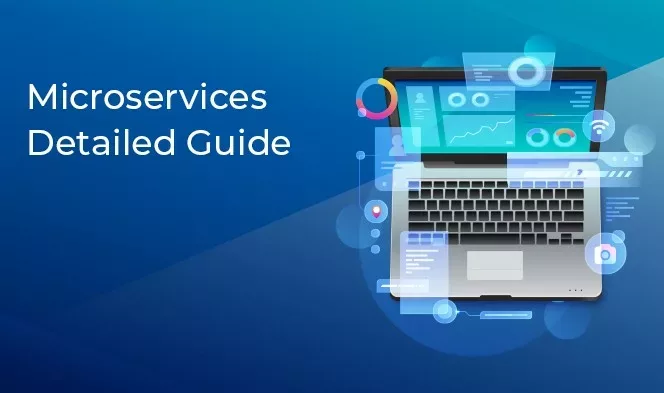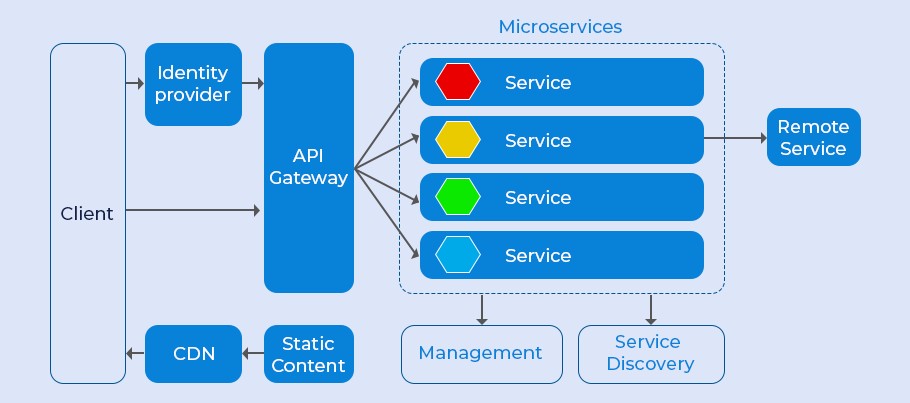3924
Microservices Architecture: Detailed Guide for 2025
03 Aug, 2021
5 min read
3924
03 Aug, 2021
5 min read

According to recent research by DZone, around 63% of companies use microservices architectures. Companies were using Monolithic architecture, but they moved to Microservices with advancements in apps and the internet.
Let’s discuss everything about Microservices architecture and its pros and cons:
Microservices architecture is a specific method of designing software systems. It structures a single application as a collection of loosely coupled services. It is easier to build applications that break down into small pieces that work together. Microservices are more about applying a certain number of principles and architectural patterns. Each of these microservices lives independently but also relies on each other. All these microservices deploy in production at their own pace, on-premise, or on the cloud.
Big companies like Facebook, Google, Netflix, etc., use it to power their applications. Going further, let’s see the Microservices architecture.

Microservices provides fine-grained services and lightweight protocols to follow. It has plenty of other things except the Microservices themselves.
Microservices architecture is used to build applications and each of these has certain characteristics. They are:
A single unit is used to build monolithic architecture. To build enterprise applications, there are three parts:
It is a single logical executable service. To make any changes in the system the developer needs to build and deploy an updated version of the server-side application.
With monolithic service, there are certain drawbacks:
Whereas, as discussed above, Microservices is a collection of loosely coupled services. They are easier to build applications that break down into small pieces and work together. The following things set Microservices apart from Monolithic services:
People are opting for the latter one when it comes to constant comparison between monolithic and microservices. If you are thinking of developing an application, then the following are major benefits and drawbacks of Microservices:
Microservices assigns to the single development team to maintain it and developer can work independently. Small teams can work in parallel and iterate faster than larger teams. When a single service does not work better, the smaller team can also scale the services independently without needing to wait for a larger and complex team.
Suppose one of the components fails due to outdated technology or the inability to develop the code further. In that case, developers can easily spin up another component while the rest of the application can function independently. This gives developers the freedom to develop and deploy services as and when needed, without waiting on decisions about the entire application.
Microservices are made of small components and can take up fewer resources so they are easy to scale to meet the increasing demand for that specific component. Microservices can function even when there are large changes in size and volume, which makes it ideal for enterprise applications that are using a wide range of platforms and services.
Compared to monolithic architecture, individual components are easy to fit into continuous delivery. Only pinpointed service needs modification and redeployment when a change comes. If a service fails, others will continue to function independently.
There are two major benefits:
Microservices are complex and challenging to learn compared to monolithic architectures. It is difficult to build new solutions and is faulty as many engineers are not that familiar with it. It is not the best solution for all applications, so you will have to understand the business requirements and make necessary changes.
They are costly and run in their own environments with their own CPUs. They work with all API calls which are costly. Additionally, the development environment is complex and requires a team of experienced developers. As a result, it has costly development.
Handling data requests is one of the most difficult challenges with Microservices as it spans multiple services and requires constant updates to the data.
Whereas, in Monolith you can rely on ACID transactions to roll back a database change if something goes wrong. With microservices, there is much more complexity involved as it uses distributed transactions across various services.
Between the constant fight of Monolithic and Microservices, the latter is better. Microservices architecture brings some major advantages as it makes it easy to develop an application. If you plan to develop an application and want to know which architecture to follow, Microservices is your answer.
Despite the complex structure, it has changed the way we develop applications. But, to develop an application using Microservices, you will need an expert who can help you with development. Hire asp.net developers from us who can help you with app development. Our expert team of developers will understand your requirements and help you to fulfill them.
All product and company names are trademarks™, registered® or copyright© trademarks of their respective holders. Use of them does not imply any affiliation with or endorsement by them.

Artificial Intelligence (AI)
87
By Uttam Jain
10 Dec, 2025

Artificial Intelligence (AI)
179
By Afzal Qureshi
09 Dec, 2025

Artificial Intelligence (AI)
171
By Afzal Qureshi
09 Dec, 2025